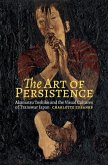How color is used in the most famous works of Japanese art--from the 16th century to the present. From the vibrant reds of traditional kimonos to the serene blues of tarashikomi riverscapes and woodblock prints, this book shows that color itself is a leading figure in Japan's long and varied artistic tradition. Whether you are a collector of Japanese art, a student of art history, or simply captivated by the rich shades, tones and hues that Japanese art presents, Colors in Japanese Art is your key to understanding this extraordinary artistic tradition. This book presents over 120 great works of fine and decorative art and discusses the color schemes used in each work, including: * The vibrant red, gold, multi-hued kimonos from the 18th and 19th century Edo period * The gold, green and deep-blue season-themed screens of Tohaku and Sesshu * The elegant pinks and blues in the landscape prints of Hiroshige and Hokusai * The blues, reds and yellows in the Ko-Kutani and Imari porcelains of the Edo and Meiji periods * Earthy golds in fine lacquerwares dating as far back as the Heian period * And so many more colors in over 120 magnificent examples! >Color swatches accompany the featured artworks to show readers how colors were used in subtle combinations, including many hues, tones and tints unique to the Japanese arts. A color chart at the end of the book summarizes the beautiful colors that are most characteristic of this tradition.








